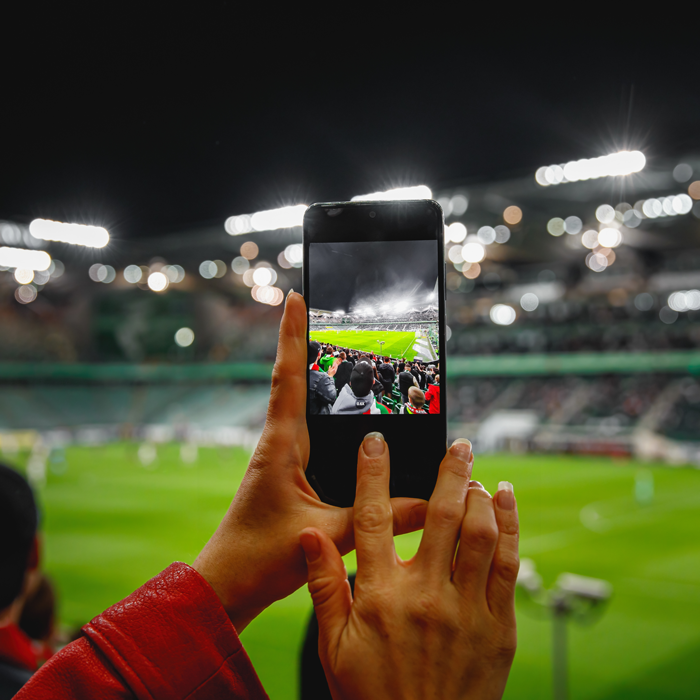For advertisers looking for eyeballs on a global scale, there are few events that offer the prestige, excitement — and captive viewing audience — as FIFA’s World Cup.
This year’s just-completed tourney delivered high-powered soccer excitement — and a healthy dose of in-stadium, TV, and streaming advertising messages — to a global audience of 5 billion people. It’s an average of 227 million spectators a day (for nearly a month!), tuning in to watch teams from 32 countries slug it out for 90 excitement-filled minutes.
For advertisers seeking to maximize their opportunities to shine during a seminal event such as the World Cup, it requires deft navigation of cultures, trends, and targeting. With the 2022 cup in the immediate rear view, advertisers are now looking forward to an even greater bounty in 2026, when an expanded field of 48 countries complete in more than 100 games in Canada, Mexico, and the United States.
To bring this into greater focus, we’d like to recap what advertisers learned from the 2022, and how they can use these lessons to supercharge their efforts for 2026:
Cultural Sensitivity:

The World Cup brings together people from different cultures and backgrounds, and it’s important for advertisers to create campaigns that resonate with this diverse audience. Advertisers need to be aware of cultural differences and avoid using offensive or inappropriate language or imagery.
“This is important for connecting your brand in with personalities they care about, while making sure it reflects the brand’s values,” said Fernando Loverri, Director of Design at Zimmerman Advertising.
Loverri said advertisers should pay particular attention to authenticity when considering cultural differences. “Advertisers need to give their audiences the platform and space to form their own unique connection with your brand by bringing them curated experiences.”
Particularly for fans in the U.S. multiculturalism will be the order of the day. “Not only are we a nation of immigrants, but we are also a nation without a historical culture for the game,” said John Vincent, Associate Director of Experience Strategy at Zimmerman. “This creates a unique phenomenon where we’ve seen players debate on playing for the U.S. or the country of their parents’ birth and more importantly from a fans standpoint, rooting for multiple countries throughout the tournament.”
The Power of Storytelling:

Effective advertising campaigns often tell a compelling story that resonates with the audience and evokes emotions. At the World Cup, advertisers used storytelling to create campaigns that captured the excitement and drama of the tournament.
For example, some campaigns used inspiring stories of athletes overcoming adversity to motivate and inspire viewers. Adding a new dimension to this dialogue will be the key to keep Gen Z engaged going forward. As one example, Spain coach Luis Enrique streamed a live, open conversation with fans.
This is the perfect forum for advertisers who want a sponsorable element of the World Cup that “establishes a direct connection with the fans who may be interested in information about the national team, and by extension, advertisers who support it,” Loverri said.
Social Media Still Dominates:

Social media platforms are increasingly popular among World Cup viewers, and advertisers used these platforms to create buzz and engage with fans. Advertisers used hashtags, contests, and other social media tools to create interactive campaigns that generated excitement and interest.
Here, again, authenticity is — and will continue to be — the key to unlocking the power of social for brand building. “It will be critical to utilize influencers that are honest,” Vincent said. “The consistent trend after the pandemic was for brands to act real — less polished — on social. This is why TikTok has become so powerful.
“Particularly with the emergence of B-Real (a new social network), we’ve seen influencer after influencer become more “real” with more honest opinions, less makeup, more of showing their real selves, and the phenomenon of ‘expectation vs reality.’ With the World Cup coming to our home soil, it presents a big opportunity not only for traditional inclusivity, but to fan the flames of excitement in a way we’ve never seen before,” Vincent said.
And, with more and more people cutting the cord and looking to social and streaming for viewing and collaborating, we can expect an even greater emphasis on those channels in 2026.
“A substantial part of today’s fan base rarely watches the games on traditional TV,” said Loverri. “That’s why associating yourself with the World Cup by building immersive experiences and giving fans the platform to create their own communities in a controlled environment is a much better way of developing real connections.”

